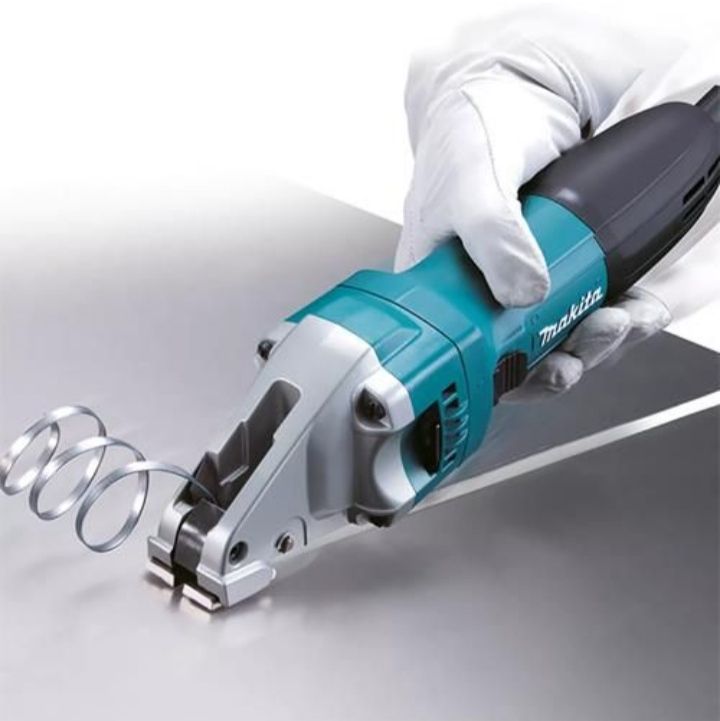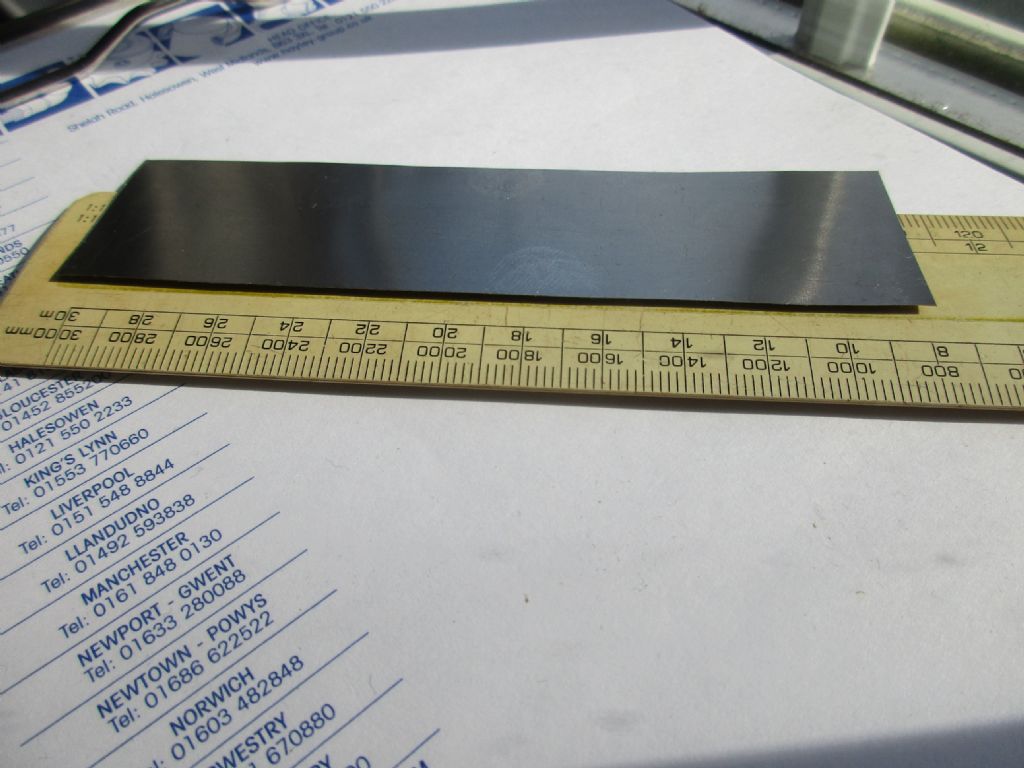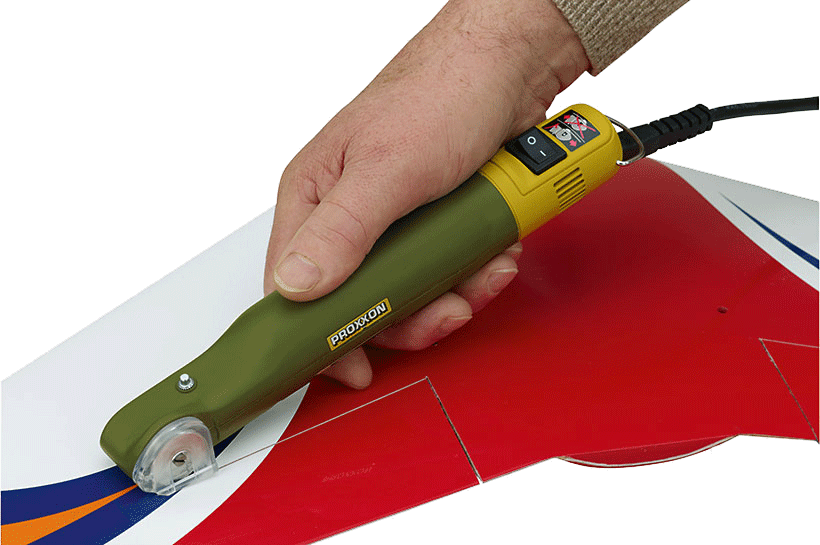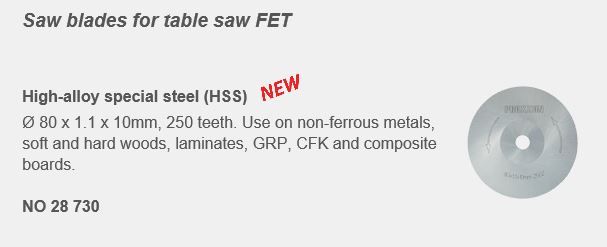Small saw. Proxxon or something else
Small saw. Proxxon or something else
Home › Forums › Workshop Tools and Tooling › Small saw. Proxxon or something else
- This topic has 114 replies, 24 voices, and was last updated 19 September 2024 at 09:06 by
 Michael Gilligan.
Michael Gilligan.
-
AuthorPosts
-
23 April 2021 at 08:47 #541184
 Michael GilliganParticipant@michaelgilligan61133Posted by John Smith 47 on 22/04/2021 23:00:34:
Michael GilliganParticipant@michaelgilligan61133Posted by John Smith 47 on 22/04/2021 23:00:34:.
To get clear, I need a result that its more or less "optically flat"!
.
 Is that another of your ambitious ‘specifications’ [ like EXACTLY 45° ] ?
Is that another of your ambitious ‘specifications’ [ like EXACTLY 45° ] ?… or are you serious ?
I can find no credible definition of “more or less” … but to have any hope of knowing what you have achieved, you will need to measure flatness; so you might find this helpful: **LINK**
https://www.kemet.co.uk/blog/lapping/how-to-measure-flatness-technical-article
MichaelG.
23 April 2021 at 12:42 #541221Dave S
Participant@daves59043Seems to me if you had a small mill, somewhat like a sherline 5000, where the head can be set over at an angle then you could just use a slitting saw on an arbor.
As a bonus that machine could also do all sorts of milling things, and probably make precision V blocks with 90 degree included angles as well
Dave
23 April 2021 at 14:46 #541229John Smith 47
Participant@johnsmith47@Pete – I know that there will always be a little bit of finishing required.
For 1mm I just use a fine hand file and/or some fine wet & dry glued onto a flat piece of MDF.But what's the thinnest sheet you have cut this way and had it come out without being bent?
I am working with magnets and even the slighest bed in the steel sheet is completely unacceptable. These bends only become evident when you try to sand/polish the steel.
Yes I tied a nibber – manual one used extremely carefully – and the results were completely unacceptable.
@speelwerk – Melamine sounds like a good compromise. Do you mean like a kitchen sideboard panel? (I have some but it has a mat rather than dead-flat finish).
@JasonB
> "each cutter will have a different cutting speed"Nightmare! In my experience life is to short to get cutting speeds exactly right.
> As a rule of thumb if using HSS then 30m/min, Carbide tipped or solid
> tooling 100m/min and abrasive discs 3-4000m/min all could be +/-20
Thanks – that's helpful.My little abrasive cutting disk cuts extremely well at 1,300RPM.
> From this and your example calculations it's easy to see that all
> these saws are really designed for wood as the speeds are optimised for that
But are they really?
I thought the cutting speed for wood was "183 to 305" m/min!@Stuart – Q.E.D. !
Byrnes Table Saw for £600 not completely impossible… It does look beautifully made! But even for that money you're not getting a tilting table, it's fixed speed (3450 rpm ). There is an optional tilt table (although I can't see how that works… I think you can only just the width of a chamfer rather than cut a whole sheet using a tilted cutting angle)
@Michael Gilligan…
> Is that another of your ambitious ‘specifications’ [ like EXACTLY 45° ] ?
> or are you serious ?
That is somewhat unfair. As we all know, there is no such thing as "exactly" any dimension within a workshop and I was speaking loosely, not pedantially and I meant "as close to exactly 45° as one can reasonably hope to obtain in a home workshop without undue time, effort and pain…" moreover I did subsequently clarify that I needed my 45° chamfer to at least be within 1 to 1.5 degreesThe wavelength of light is about 0.5 microns so no, I don't literally mean within the wavelenght of light, I meant that when you polish the surface there is no obvious bending in the plate near the cut that has been caused by the cutting process.
Like I pointed out for very thin sheets of steel sawing is not an option.
When I say "optically flat" again I mean that when you polish the darned thing up with a very find emery cloth, that the reflection of the surface still LOOKS to be absolutely flat. To be pedantic maybe I should have said that the surface needs to be "absolutely as flat as one can reasonably hope to obtain in a home workshop and by looking at the reflection of the surface it is not obvious bent". Happy? Or maybe "accurate to within say better than 25 microns/1 thousandth of an inch" would have been better?
@Dave S – When I have a bit more time, a bit more space and a bit more money… yes, absolutely. Right now I just can't quite afford that sort of money… (GBP 1000 to 1500 delivered to UK) but I do hear you. And I shall ponder further.
23 April 2021 at 15:00 #541231 JasonBModerator@jasonbPosted by John Smith 47 on 23/04/2021 14:46:44:
JasonBModerator@jasonbPosted by John Smith 47 on 23/04/2021 14:46:44:I thought the cutting speed for wood was "183 to 305" m/min!
My woodcutting saws give a speed of just over 3,000m/min that's 250mm blade at 4000rpm.
Cost of the Sherline is not so bad as it will do the work of a separate saw, also do the work of an accurate drill that you were recently asking about and also all the other things a mill can do in one machine rather than several.
23 April 2021 at 15:58 #541239John Smith 47
Participant@johnsmith47@Jason B
> also do the work of an accurate drill
Except that it doesn't have a quill, so presumably it's kinda painful to get the swarf out as you drill, no?@Stuart Munro 1
RE Byrnes Table SawI have just discovered
1. The basic saw weighs 29 lbs (13.1Kg)
==> That IS pretty heavy… but it is SO beautiful that I would forgive it!2. The motor is a capacitor start motor 1/3 HP (250watts) 3450 rpm.
"It cannot be slowed down or sped up. It’s not designed to cut steel"Discs seem to be 3" or 4". ==> and so cutting speed will be way too slow for grinding.
So there you have it. Lovely bit of kit but no use to me.
23 April 2021 at 16:26 #541242 Michael GilliganParticipant@michaelgilligan61133Posted by John Smith 47 on 23/04/2021 14:46:44:
Michael GilliganParticipant@michaelgilligan61133Posted by John Smith 47 on 23/04/2021 14:46:44:.
@Michael Gilligan…
[…]
Happy?
.
In a word … No
But it is not my remit to check your specifications,
so I can retire quietly from the discussion.
MichaelG.
Edited By Michael Gilligan on 23/04/2021 16:27:05
23 April 2021 at 16:39 #541244SillyOldDuffer
Moderator@sillyolddufferPosted by John Smith 47 on 23/04/2021 14:46:44:
…
… I meant "as close to exactly 45° as one can reasonably hope to obtain in a home workshop without undue time, effort and pain…" moreover I did subsequently clarify that I needed my 45° chamfer to at least be within 1 to 1.5 degrees
The wavelength of light is about 0.5 microns so no, I don't literally mean within the wavelenght of light, I meant that when you polish the surface there is no obvious bending in the plate near the cut that has been caused by the cutting process.
…
Like Michael, I'm confused by some of John's terminology. I suggest it's best not to use engineering specific terms in an ordinary way because it might confuse engineering savvy readers. For example, 'EXACTLY 45°' strongly implies high-precision, which is achievable in a home workshop, making the clarification 'as one can reasonably hope to obtain in a home workshop without undue time, effort and pain' unhelpful too. Especially when we find the actual requirement is 'within 1 to 1.5°', which isn't particularly exact at all.
Worth trying to express problems accurately, even though it's so difficult to do. Pays to be precise, numbers preferably, because the requirement can have a big impact on the tools and techniques needed to meet it. Really bad to be advised to buy the most expensive kit on the market when something ordinary would have done, and equally bad to be told a basic tool will do the job when it won't!
Considering mirror-like surfaces, it's the difference between:
- The foot of a camera tripod left in shiny 'as machined' condition. Not much work, nothing special needed. Bog standard job.
- Handles on the same tripod not needing to be accurate but brightly polished for cosmetic effect. Again, fairly painless, but extra effort needed to do the polishing, perhaps a linisher, belt-sander, and powered mop, though all these can be extemporised on a mill or lathe. For best effect the 'extra effort' will be considerable, and lots of people cheerfully do it.
- The internal moving parts of a camera might be lapped flat. Lapping is a notch or two more advanced but not impossible in a home-workshop. However, the choices made might be the difference between success and failure, particularly if the operator is semi-skilled. And if a lot of this sort of work is to be done, a skilled operator will save much valuable time by using suitable tools.
- A camera's mirror will be highly polished close to optically flat, the real McCoy. Again, do-able at home, but much quicker and easier with the right gear. Optically flat is a tough target and I'd prefer to buy a mirror rather than make one myself.
John's redefinition of optically flat still leaves me in the dark. I'm not sure if he's after an optically good mirror for imaging or a straight edged reflector for cosmetic reasons. Depending on how good the edge needs to be sawing with sacrificial support underneath might be good enough. However, I'd probably make the plate by cutting it oversize with a saw or nibbler and then milling, filing or grinding the edge to size. Two processes, one fast and crude, the other slow and delicate to remove cutting damage and get dimensional accuracy.
Excellent work can be done with simple tools. It requires skill and patience, and maybe one has to ignore an overflowing giant scrap box! When time is of the essence it pays to cough up for the best tools available and make jigs etc. Otherwise, most of us use the best tools we can afford, which are rarely top-end. My machines are relatively crude, underpowered and lack rigidity. But they mostly do what I need eventually, provided I drive them carefully, practice, take advice and think! In my world Model Engineering is one compromise after another.
Dave
23 April 2021 at 16:41 #541246 Pete.Participant@pete-2Posted by John Smith 47 on 23/04/2021 14:46:44:
Pete.Participant@pete-2Posted by John Smith 47 on 23/04/2021 14:46:44:@Pete – I know that there will always be a little bit of finishing required.
For 1mm I just use a fine hand file and/or some fine wet & dry glued onto a flat piece of MDF.But what's the thinnest sheet you have cut this way and had it come out without being bent?
I am working with magnets and even the slighest bed in the steel sheet is completely unacceptable. These bends only become evident when you try to sand/polish the steel.
Yes I tied a nibber – manual one used extremely carefully – and the results were completely unacceptable.
John, I don't know where a nibbler came into the equation?
The shear I showed cuts without distortion either side of the cut, this is for roughing out a few millimetres oversize, the shear can be used for trimming the edges, you could finish it as you already have been doing, some emery cloth on a flat surface to de burr the edges.
I've never used it with under 0.9mm sheet steel, never had any need, I thought your request was primarily for 1mm steel and stainless.
You can actually cut surprisingly straight lines with a piece of angle iron clamped to the sheet, using it as a straight edge to guide a 1mm slitting disc on an angle grinder, I use this method to fold sheet, as 1.5mm sheet steel is incredibly harder to bend than 1mm, without any folding equipment in my small workshop, by slitting half the thickness it allows very straight sharp corners to be bent without the proper equipment, then stitch weld the inner corner to replace the strength.
I need to fabricate some drawers for my lathe cabinet soon, so I could demonstrate this for you, but I'm so busy I won't get a chance for a few weeks
23 April 2021 at 16:56 #541250Dave S
Participant@daves59043To slow for grinding appears to be a case of “internet knowledge”
My surface grinder is supposed to run 71/2” wheels iirc, so I didn’t look at that.
However:

Bog standard bench grinder from B&Q. Takes 150mm wheels, runs at just under 3000 rpm.Homebrew cutter grinder:
Has a 4” cup in it currently, also runs a 4” saucer.
Speed:
Also just under 3000 rpm.
I have never needed to run a slitting disk on either, but I don’t doubt that with a thin wheel at that speed both would still work. Of course it would need to be the right wheel. Abrasive wheels are cutting tools, and much like different types of carbide or HSS there are different types of wheel. A wheel designed to run at 10000 rpm is built differently to one with a slower maximum speed.
I do wonder if John S is trolling or just indecisive.
Dave
23 April 2021 at 16:59 #541251 Pete.Participant@pete-2
Pete.Participant@pete-2Sorry I forget to add, 18v shear for roughing out, bench shear for trimming edges to finished size, incase it might have caused some confusion.
23 April 2021 at 17:44 #541258 JasonBModerator@jasonb
JasonBModerator@jasonbJohn, regarding drilling, in the other thread I said they do a sensative drill attachment which is ideal for small holes and allow the drill to be raised and lowered quickly to clear swarf etc. You can buy similar over here that will fit for a lot less.
As I have said from the start a mill with slitting saw will do the job I just stuck a bit of manky 0.8mm, 110mm long mild still in my mill and mounted a fine tooth HSS saw blade. First cut is leveling off the top second is cutting a 1.5mm wide strip. Any bend you see is due to the parent metal being from the scrap bin and not flat to start with. If cleaned up it would Look flat which is what I expect you mean as you don't want deformed edges like a shear can gibe or curled parts like tin snips.
Could not get the phone to focus well but once the small burr was knocked off it would clean up well with a quick rub. A more concentric blade would probably help too!
Photo against a 1-2-3 block with the sun behind, no sign of light getting through.23 April 2021 at 18:47 #541261John Smith 47
Participant@johnsmith47@SillyOldDuffer
I'm sorry, it is clear that I am still being clear enough. I am up against tight deadlines and just want to do cutting the doesn't very obviously bend the steel near where it has been cut. Like I say high speed cutting discs don't have this problem, once you have deburred the cut itself.I am working with magnets and need to transfer the maximum possible magnetic flux between surfaces. As you may know, much like electrical current, magnet flux doesn't like jumping big gaps.
Yes as noted, sacrificial support would help. If strong enough it would help perfectly but would slow down the cutting speed, and generate a lot of cuttings.
Like I say using a nibbler was an absolute disaster, with the bending of the 1mm steel extending for a good mm or so, even on 1mm mild steel plate. A hacksack does not bend the plate but I find it painfully hard to cut long distances very straight – I just want a machine to help me.
Can I just say it needs to be flat to within 1 thou and move on?
@Pete – Your shears looked like a mechanised version of a nibbler that's all. I they can cut steel sheet reliabily with no visibly obvious sign of any bending near the cut them I might buy some myself! Yes most of my requirement is for 1mm steel, but I will need to various sizes cut down to 0.1mm steel from time to time as well.
Also – to get clear a "Bench Shear" is basically a guillotine with a long arm for leverage, yes? [I am a newbie, please remember]
If so, presumably you will get at least a bit of rounding /deformed edges. In 1mm steel the question arises how far this extends.Here is a quick diagram of what I mean:

@Dave S –
Interesting to know that 3000 RPM at 4inch diametre makes for good grinding. Whether that makes for good CUTTING on a 1mm abrasive disc I don't know.But given those numbers, can you explain why are all the circular table saw manufactures are all so adamant that their machines can't cut steel? If just don't make sense…
> I do wonder if John S is trolling or just indecisive.
Back off. Absolutely not trolling.I am a newbie but learning fast. However it seems that every time I am about to make a decision I get new information that renders what I was about to do a poor decision.
@Jason B – awesome video! I agree a good quality mini milling machine would solve a lot of problems. What would you say is the thinnest thickness of mild/stainless steel you could do that treatment with?
23 April 2021 at 18:57 #541262 JasonBModerator@jasonbPosted by John Smith 47 on 23/04/2021 18:47:26:
JasonBModerator@jasonbPosted by John Smith 47 on 23/04/2021 18:47:26:@Jason B – awesome video! I agree a good quality mini milling machine would solve a lot of problems. What would you say is the thinnest thickness of mild/stainless steel you could do that treatment with?
I would not want to go much below 0.5mm without additional support, with it sandwiched then I don't think your 0.1mm would be a problem. Will see what I have to try it on tomorrow.
23 April 2021 at 19:23 #541265 Pete.Participant@pete-223 April 2021 at 19:41 #541272
Pete.Participant@pete-223 April 2021 at 19:41 #541272Dave S
Participant@daves59043@Dave S –
Interesting to know that 3000 RPM at 4inch diametre makes for good grinding. Whether that makes for good CUTTING on a 1mm abrasive disc I don't know.Cutting with a grinding disk is grinding
I have some thin wheels for my surface grinder, which IIRC runs at a similar speed in terms of rpm. It’s surface speed is slightly more, as it has bigger wheels when new.
Angle grinder disks are reinforced to cope with gorillas mishandling them in the cut. Even so I think a 1mm angle grinder cut off wheel would run and cut fine at much lower rpm than a typical angle grinder runs. I’d go and try it if I really thought you would take any notice…But given those numbers, can you explain why are all the circular table saw manufactures are all so adamant that their machines can't cut steel? If just don't make sense…
Product liability would be the first thing. If I designed a machine to use a course toothed saw to cut wood which is fairly soft I wouldn’t say it could cut metal which isn’t – that would lay you wide open to claims for failure.
Cutting metal generally involves higher forces, and most tools are built with cost as a major consideration. All then”cheap” table saws I’ve seen have pressed tables and large gaps around the blade. Not what you want for cutting thin bendy stuff. Wood at least will destruct as it tries to wedge into the blade / table gap.
> I do wonder if John S is trolling or just indecisive.
Back off. Absolutely not trolling.I am a newbie but learning fast. However it seems that every time I am about to make a decision I get new information that renders what I was about to do a poor decision.
As I said somewhere in one of your threads the best decision, especially if you are up against a deadline, is to make one. So far I have seen something like 4 threads where you jump off into another line of investigation without having seemingly actually done anything with the information from the previous ones. You have impossible yet also imprecise specifications and don’t seem to listen when people say you can have that, but this compromise applies – usually it’s because you seem to want a Rolls Royce but only pay Robin Reliant prices or some other unicorn fantasy. You might be better to sub contract your machining, you won’t get new toys to play with, but your device could be finished. That would however mean properly specifying what you actually want and I’m not sure you know this.
Dave24 April 2021 at 01:55 #541306John Smith 47
Participant@johnsmith47> Cutting with a grinding disk is grinding
I would have thought that during grinding it may be important not to change any heat treatment of the metal… e.g. when sharpening a knife say. Whereas cutting – e.g. with a angle-grinder – seems like a more brutal process. From what I can see 4.5" (115mm) and 9inch (230mm) angle grinders seem to run unbelievably fast even the large ones seem to run at 6000RPM, smaller ones more like 8000RPM. I would have guessed that if you want precision a slow speed would help. But if you want precision and the ability to cut fast, then an extremely high speed would also help. …But what do I know?
@Dave S
Your ad hominem attacks are noted.I thought we were here to discuss 'workshop tools & tooling'… but since you ask, yes, various deadlines have now passed… with more to follow.
So far I have been making do with fine-toothed hacksaws, good quality course file and a fine file, and various grades wet & dry, sometime mounted on flat blocks of MDF. Once cut I have 'sanding' them down using customised small stick-like piece of wood (or sometimes finger) with double-sided sellotape (which works BRILLIANTLY, btw).
The problem is that it's extremely time-consuming as well as demanding great skill & concentration… and all trying to do manually what a machine could do much more accurately.
At some point soon we will need to move to small-scale production of our products and that will definitely necessitate better tools. But we are poorly resourced and without a permanent workspace and I need to be extremely careful with finances and use of space.
Yes, some stuff I have outsourced – some machining and some laser-cutting – but it as you can imagine it always has a relatively slow turnaround time and a large cost, particularly the setup cost. And before you can blink you soon find that what you've ordered isn't quite what you actually want!
I have flagged from the top, and repeatedly, that I am a newbie to all this. It is precisely because I am listening – intently – to all new information and opinions that making making decisions has proved hard. "Any damned fool can make poor decisions" and make them as fast as you like!
If you want the truth, I have felt honoured and delighted with all the high quality contributions from model-making experts in this community tolerating my various dumb questions, not that their opinions always match each other – we all have our individual biases & preferred ways.
However until now, I have been assuming that if any contributors to this thread no longer find this thread interesting… that nobody is "forcing" them to read any of this stuff. If this is not the case please do let me know.
Edited By John Smith 47 on 24/04/2021 01:57:52
25 April 2021 at 00:58 #541452 Pete.Participant@pete-2
Pete.Participant@pete-2usually it’s because you seem to want a Rolls Royce but only pay Robin Reliant prices or some other unicorn fantasy. You might be better to sub contract your machining, you won’t get new toys to play with, but your device could be finished. That would however mean properly specifying what you actually want and I’m not sure you know this.
DaveI'm not sure, John's toughest requirement in my eyes were the seemingly ridiculous weight/space restrictions for metal working equipment, the space restriction being absolutely none, I got the impression he was willing to spend good money for the piece of equipment that would meet his requirements.
In this thread John, everyone has suggested things that could be made to work, to make parts of what you want, a shear could work, but it wouldn't grind you 45° edges, a table saw type machine like the proxon with an abrasive cut off disc could cut your metal, but it wouldn't grind your 45° edges accurately.
A small milling machine is the obvious thing that could achieve your goals, a hss slitting disc, a small abrasive disc for cutting your parts, you could mount small grinding wheels combined with a tilting vice to finish your edges at desired angles, it would do pretty much everything you need.
The new model sieg x1 sold by Arc euro advertising at the top of this page, has a fixed column, 4 screws, as I said to you in another thread, this machine weighs 50kg, if you remove these 4 screws you could meet your requirement of being able to move two 25kg parts from the dining room table to the side cabinet when not in use, I believe this was your requirement, it costs about £600, is in stock from a UK supplier.
26 April 2021 at 07:59 #541609Stuart Munro 1
Participant@stuartmunro1Cutting sheet metal accurately is such a fundamental component of model engineering that I've enjoyed this instructional debate. If only some enterprising manufacturer would pay heed and design something that works – I'm sure many of us would buy it.
John and myself to start with.
Now the (long retired) corporate/financial analysts in me comes out. Jim Byrnes in Florida and Sherline in Australia were modellers who decided that the machines they wanted were not being made…the rest is history. Anyone out there with a business plan?
Just dreaming, as I do of owning a real lathe and mill. Alas, my /Sherlines are all I have room for.
Stuart
26 April 2021 at 09:29 #541618SillyOldDuffer
Moderator@sillyolddufferPosted by John Smith 47 on 23/04/2021 18:47:26:@SillyOldDuffer
I'm sorry, it is clear that I am still being clear enough. I am up against tight deadlines and just want to do cutting the doesn't very obviously bend the steel near where it has been cut. Like I say high speed cutting discs don't have this problem, once you have deburred the cut itself.I am working with magnets and need to transfer the maximum possible magnetic flux between surfaces. As you may know, much like electrical current, magnet flux doesn't like jumping big gaps.
Yes as noted, sacrificial support would help. If strong enough it would help perfectly but would slow down the cutting speed, and generate a lot of cuttings.
…
Can I just say it needs to be flat to within 1 thou and move on?
…
I am guilty! Though in mitigation the forum does tend to wander off the subject! I thought we'd moved away from the magnet problem (which I also misunderstood at the get go), and where discussing the properties of Proxxon type tools in general.
I don't believe any of the Proxxon tools will do the magnet job in a single operation. Worse, I can't think of an affordable general-purpose machine that would do it either! Expensive machines yes.
All is not lost. The job can be done in steps, in this case two:
- Make oversized blanks so the flaws can be removed later. Doesn't matter much how the blanks are made. Saws, Laser, shears, grinding wheels etc all deform the work to some degree or other, and the magnet requirement is too tough for any of them.
- Finish the blanks with a tool that trims them to size, removing the damaged section in the process, and leaving a good finish. Could be done in a lathe, but a milling machine is the obvious candidate.
Making parts in several stages is the usual way things are done. Here, the workflow might be:
- For speed, magnet-blanks could be churned out by a shear. (Saws are slower and less accurate, but can be used for other purposes. If speed doesn't matter, and other cutting work is on the card, saws are more general purpose.)
- Clamp the blank in a milling machine and remove the edges to size. It will probably be necessary to trim off the delicate burr left by the milling cutter, but this is an easy job – swipe with a fine file or grinding block.
If many blanks are to be finished, it's worth making jigs to hold them. Rather than carefully positioning each blank in the vice, instead drop them into a fixed jig that guarantees position and accuracy. Making jigs is a lot of trouble, usually not worth doing unless tens of identical parts are needed.
I think it's do-able with a Proxxon saw AND a Proxxon Mill, even though neither are entirely happy cutting steel.
Worth repeating: John's price and space constraints make this a difficult challenge. Industry could produce these for a fraction of a penny, but their method, probably involving grinding, is expensive to set up. They might charge £10000 to make one, and then knock out the next thousand for a quid!
Dave
Dave
26 April 2021 at 17:15 #541702 Nicholas FarrParticipant@nicholasfarr14254
Nicholas FarrParticipant@nicholasfarr14254Hi, it seems to me that not many people want a table saw to cut steel with such precision, being there doesn't seem to be any budget machines about, and I doubt one would be very cheap. Cutting any metal by mechanical means, will introduce a certain amount of distortion and the thinner it is, the easier it is prone to distortion. Industry probably has machines, but of course they will be used for mass production and therefore the cost of them would be viable.
I don't know exactly how flat the OP wants his thin steel or what width and length he is after. I've cut this piece of 0.004" (0.1016mm) from a rolled up shim steel stock, with a decent pair of scissors and have only wiped a smooth file over the edges to remove any sharps. It is 30mm wide and 115mm long and both sides have been cut. I'm not claiming that the sides are absolutely straight or that it is absolutely flat and the distortions that can be seen is where it has been straightened between my figure and thumb, even at this thinness, you can distort it just by handling. I think JasonB's idea of clamping between two pieces of wood and cutting with a slitting saw on a milling machine would be the best bet, even if the cut was slightly wider and then clamped between two pieces of wood in a vice, so that just a small amount is sticking out, to enable it to be filed to size. So without expensive machinery, there is not really a mass production method.
Regards Nick.
Edited By Nicholas Farr on 26/04/2021 17:18:47
26 April 2021 at 17:41 #541711Stuart Munro 1
Participant@stuartmunro1Nicolas,
I think that I already mentioned that I cut aluminium and brass sheet with sheers then file to a smooth straight edge – like your example above. My one refinement is testament to my lack of skill, as my cuts are rough I cut 1mm outside of my score and place the sheet in a vice with a length of angle iron each side, then file down to the score. Pretty good finish.
But I would prefer a machine to do this; my wood table saw (Proxxon FET) cuts very accurately, straight and smooth but imho only works with wood. If there were a table saw that did to non ferrous metals what the FET does to wood…
I guess its machine up or skill up and as a retiree who has never dirtied his hands with engineering before, skilling up seems the greater challenge.
Stuart
27 April 2021 at 12:46 #541836John Smith 47
Participant@johnsmith47@Nicholas Farr – I wonder what would a 10×5 mm square look like in close-up?
Yes, 0.1mm mild steel is exceedingly thin and is very easily bent between fingers. For my purposes right now I have been needing to cut 10mm x 5mm little rectangles of it. And the resulting steels need to lie "absolutely" flat (i.e. flat to within 1 thou – call it 0.02mm).
I can see that a really good pair of scissors or guillotine/"bench shears" could do the job, however by the very nature of the process one side or the other always gets BENT out away from the rest of the sheet. Once bent it is almost impossible to bend it flat again. To be fair, I've not yet tried an enormously large pair of very shallow sheers with blades that are very nearly parallel to each other – maybe the steel sheet might only be bent within elastic limits [??], but I don't have space for a really large device in my domestic setup.
Further more when you zoom right in, there will be at least a little rounding.
See my post above (@ 23/04/2021 18:47)
The only thing that I have found that doesn't bend thin steel at all is a high speed abrasive cutting disk. Obviously it leaves a bur but ones that is removed by light sanding the sheet as a whole remains dead-flat.
@Stuart Munro – have you ever tried putting an abrasive cutting disk into your Proxxon FET?
From memory your circular saw has a diameter of 80mm and a RPM of 7000, so that would create a cutting speed of I make it about 1,700 m/min which should work pretty well, particularly if you have a very think cutting disk.i.e. That's really I've got to: Cutting mild steel by high speed cutting disk. HOWEVER the problem seems to be that nobody seems to have manufactured a small circular saw that is designed to cut (what would in effect be any metal) using an abrasive cutting disk.
There are lots of hand held cutting disks (AKA Angle Grinders), but so far I have yet to find any embedded into a table so as to create a "circular saw table".
e.g. This Proxxon "MICRO cutter MIC"

**LINK**
[Spec: 230V. 40W. 20,000rpm. Maximum cutting depth 4mm. Cutting width 0.5mm. Weight approx. 300g]It's rather under-powered at just 40w, and I'm sure faster would be better, but from experience 20,000 rpm can cut 0.1mm mild steel quite nicely without bending it near the cut.
J
P.S. This will no doubt cause howls of abuse & derision but there is a high speed (20,000 rpm) low cost (c. £250) , compact, highly portable (7Kg) milling machine available… the MICRO Miller MF70, complete with its build quality and crappy run-out.





Yes, IF I could find something better quality of similar spec then I would buy it, but such a thing doesn't seem to exist. And NO I can't afford the much heavier, vastly more expensive Sherline just yet. (c. 16Kg c.£1250 – £1500 all in)
27 April 2021 at 12:57 #541840John Smith 47
Participant@johnsmith47PS
New line of thinking – ever tried a "Guillotine Sheer"?
e.g. 4in Guillotine Shear by Pepe Products ($479.00 in sale in USA)
https://pepetools.com/products/4-guillotine-shear-made-in-usa
Seems to cut without bending!27 April 2021 at 13:16 #541844 Michael GilliganParticipant@michaelgilligan61133
Michael GilliganParticipant@michaelgilligan61133That looks a nice little tool but [here we go again] …
- Cuts up to 20 gauge for gold, silver and copper only.
MichaelG.
.
They even offer GBP pricing:
https://pepetools.com/products/4-guillotine-shear-made-in-usa
Edited By Michael Gilligan on 27/04/2021 13:18:06
27 April 2021 at 14:17 #541860Roger B
Participant@rogerb61624Stuart,
Proxxon offer blades for the FET for non ferrous materials including the fine tooth 28730:
-
AuthorPosts
- Please log in to reply to this topic. Registering is free and easy using the links on the menu at the top of this page.
Latest Replies
Home › Forums › Workshop Tools and Tooling › Topics
-
- Topic
- Voices
- Posts
- Last Post
-
-
Boiler Design – issue 4765
1
2
…
7
8
Started by:
Charles Lamont in: Model Engineer & Workshop
- 26
- 192
-
13 July 2025 at 10:35
 lezsmith
lezsmith
-
Sat nag
1
2
Started by:
duncan webster 1 in: The Tea Room
- 16
- 34
-
13 July 2025 at 10:11
 Michael Gilligan
Michael Gilligan
-
Silver steel crankshaft
Started by:
teamricky in: Stationary engines
- 6
- 9
-
13 July 2025 at 10:03
 JasonB
JasonB
-
buying machine tools from aliexpress experiences?
Started by:
Jake Middleton-Metcalfe in: Manual machine tools
- 15
- 19
-
13 July 2025 at 09:57
 Russell Eberhardt
Russell Eberhardt
-
“swedish iron”
Started by:
moonman in: Materials
- 11
- 15
-
13 July 2025 at 09:47
Martin Kyte
-
Difficulty in sourceing 2.5mm s/s ‘Full’ nuts
Started by:
Greensands in: General Questions
- 7
- 12
-
13 July 2025 at 09:22
Roger Woollett
-
Rotary valve engine
Started by:
AStroud in: Stationary engines
- 2
- 3
-
13 July 2025 at 08:49
AStroud
-
Another Day … Another ScumBag
1
2
Started by:
 Michael Gilligan
in: The Tea Room
Michael Gilligan
in: The Tea Room
- 14
- 29
-
13 July 2025 at 08:46
 Nicholas Farr
Nicholas Farr
-
Sanjay’s Banjo Engine
Started by:
 JasonB
in: Stationary engines
JasonB
in: Stationary engines
- 3
- 12
-
13 July 2025 at 06:50
Diogenes
-
TurboCAD – Alibre File Transfers.
Started by:
Nigel Graham 2 in: CAD – Technical drawing & design
- 5
- 11
-
13 July 2025 at 00:00
Nigel Graham 2
-
I’m Under Pressure
1
2
Started by:
howardb in: Related Hobbies including Vehicle Restoration
- 17
- 31
-
12 July 2025 at 22:00
Howard Lewis
-
Help for DIY lathe build.
1
2
Started by:
moogie in: Help and Assistance! (Offered or Wanted)
- 16
- 36
-
12 July 2025 at 21:42
Howard Lewis
-
Electronic leadscrew pitching error
Started by:
paulg 1 in: Introduce Yourself – New members start here!
- 2
- 6
-
12 July 2025 at 21:08
paulg 1
-
New Member From The Isle of Man
Started by:
sprocket 3 in: Introduce Yourself – New members start here!
- 4
- 4
-
12 July 2025 at 20:57
Howard Lewis
-
Farm Boy
1
2
…
4
5
Started by:
Dalboy in: I/C Engines
- 15
- 103
-
12 July 2025 at 18:51
Dalboy
-
The Silver Swan Automaton
Started by:
James A in: Related Hobbies including Vehicle Restoration
- 3
- 5
-
12 July 2025 at 18:46
James A
-
Model Turbines
1
2
…
24
25
Started by:
Turbine Guy in: Stationary engines
- 28
- 607
-
12 July 2025 at 16:28
Turbine Guy
-
Nozzle dot dwg
Started by:
 Michael Gilligan
in: CAD – Technical drawing & design
Michael Gilligan
in: CAD – Technical drawing & design
- 1
- 1
-
12 July 2025 at 14:47
 Michael Gilligan
Michael Gilligan
-
Yet another scam
Started by:
 Dell
in: The Tea Room
Dell
in: The Tea Room
- 2
- 2
-
12 July 2025 at 10:16
Bo’sun
-
Adjustable spanner thread direction
Started by:
 jimmy b
in: Workshop Tools and Tooling
jimmy b
in: Workshop Tools and Tooling
- 8
- 8
-
11 July 2025 at 22:14
Nimble
-
Chester Champion, warco ZX15 drawbar
Started by:
martian in: Manual machine tools
- 5
- 7
-
11 July 2025 at 21:51
Howard Lewis
-
Bosch PBD 40 bearing upgrade
Started by:
th1980 in: Manual machine tools
- 6
- 12
-
11 July 2025 at 21:33
Howard Lewis
-
Square end on round stock – Milling?
1
2
Started by:
Roger TheShrubber in: Workshop Tools and Tooling
- 17
- 30
-
11 July 2025 at 21:23
Howard Lewis
-
motor and switch wiring Myford ML7
Started by:
1957jmh in: Workshop Tools and Tooling
- 4
- 6
-
11 July 2025 at 21:09
Howard Lewis
-
Old plastic handled screwdrivers
Started by:
 Dave Halford
in: Workshop Tools and Tooling
Dave Halford
in: Workshop Tools and Tooling
- 12
- 14
-
11 July 2025 at 17:14
 Robert Atkinson 2
Robert Atkinson 2
-
Boiler Design – issue 4765
1
2
…
7
8
-


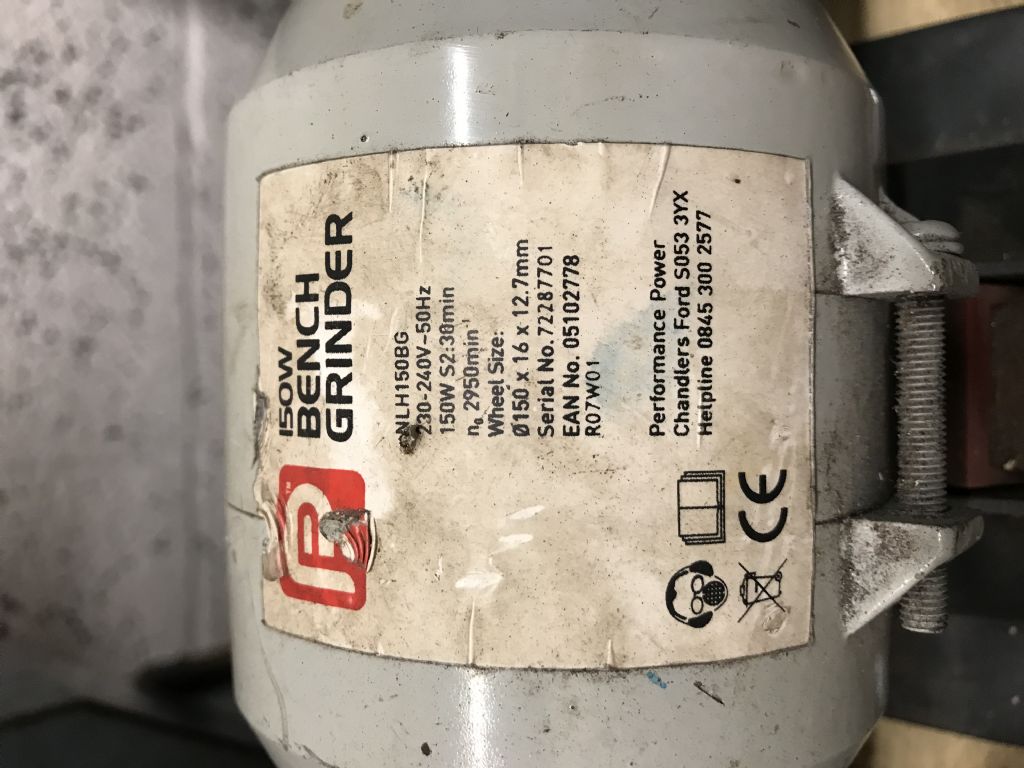
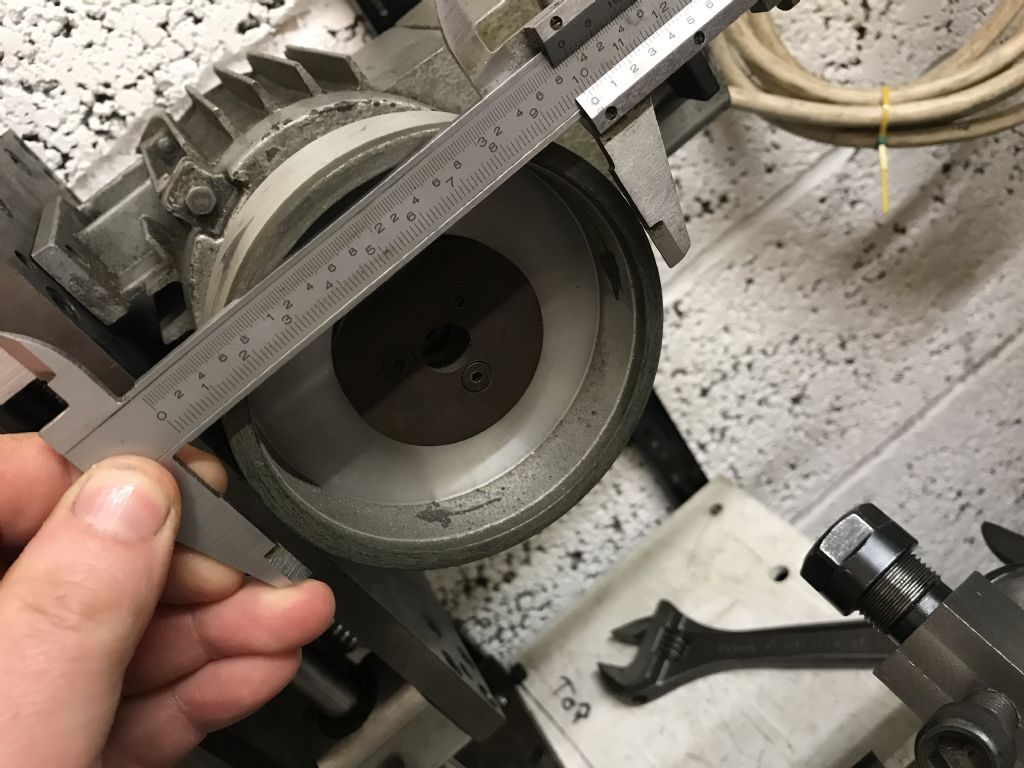
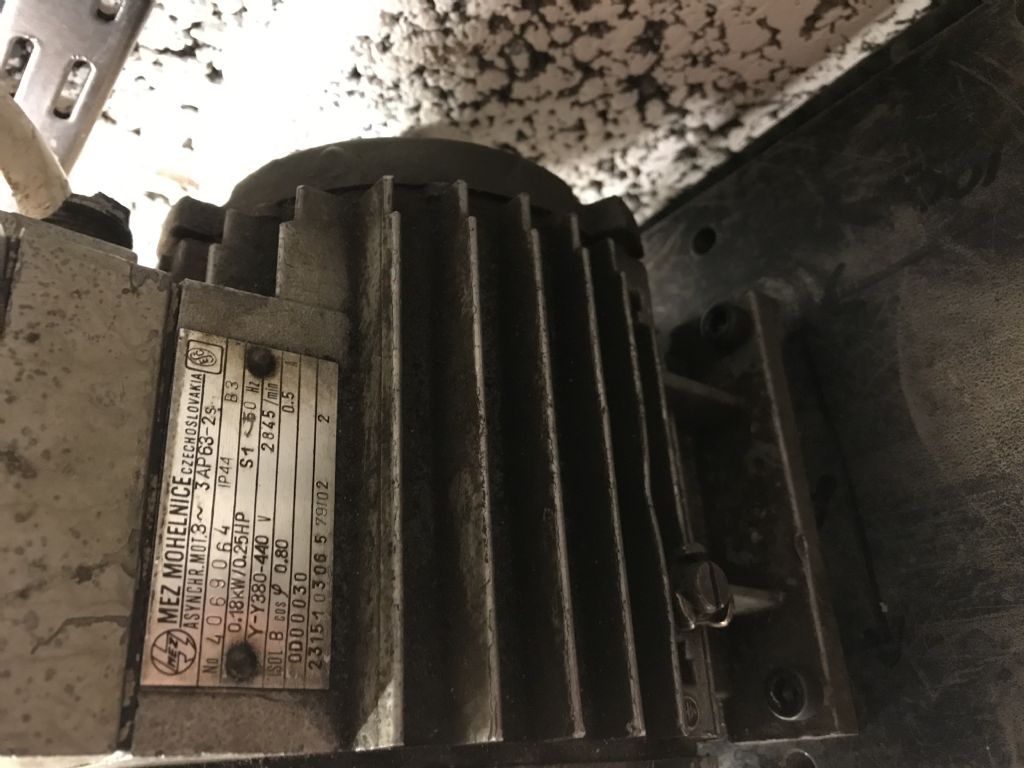
![20210423_140044[1].jpg 20210423_140044[1].jpg](/wp-content/uploads/sites/4/images/member_albums/44290/892901.jpg)

